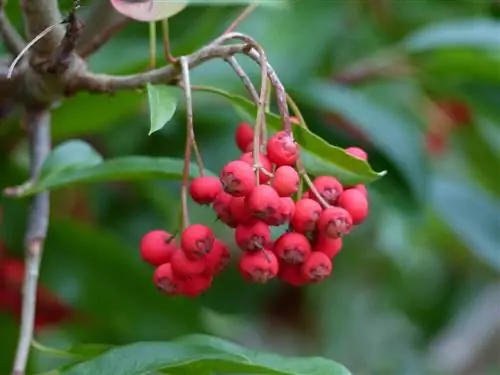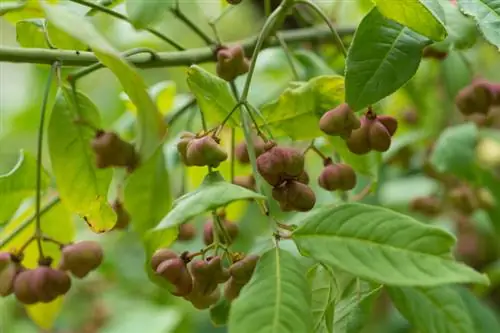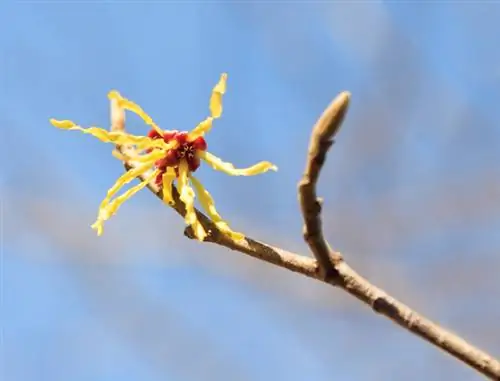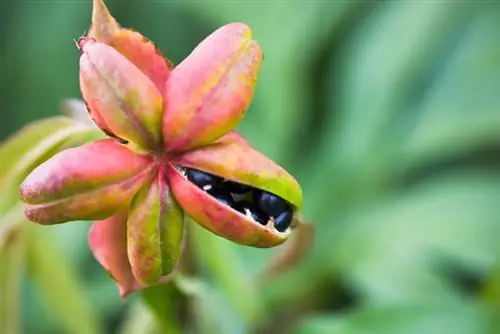- Author admin [email protected].
- Public 2023-12-16 16:46.
- Last modified 2025-01-23 11:21.
Loquats can be propagated in various ways. Not every method promises success. Which option you choose depends on your willingness to experiment. However, you should consider the timing, because not every method works at all times.

How can I propagate a loquat?
There are three methods available to propagate a loquat: cutting and rooting cuttings in summer, sowing seeds from berries and planting them on a young bush, or forming sinkers by pulling down and fixing flexible shoots.
This is how you can multiply the loquat:
- through cuttings
- by sowing
- by lowering tool
Cuttings
In summer you can cut off 30 centimeter long shoots from the bush that are half woody. In order for the cuttings to grow, you need at least three fully formed pairs of leaves. Remove the bottom pair of leaves and place the cutting in a pot that you have filled with a mixture of sand or peat and potting soil (€6.00 on Amazon). Place a transparent plastic bag over the cuttings to create high humidity. Root formation occurs after a few weeks.
Propagation via cuttings is easy, but not every shoot produces roots reliably. One reason can be the lack of moisture in the air and in the substrate. If the cutting has rooted successfully, cultivation in a bucket is advisable. Older plants can be transplanted into the garden. Since the young plants are very sensitive to frost, they should overwinter in a mild place for the first two to three years.
Sowing
The seeds from the berries are sown in an unheated cold frame and then watered sparingly. After a few weeks the seeds will germinate. The seedlings remain in the bed for the first winter. Make sure to place the bed in a frost-free location in winter. Transplanting is possible next year. After the Ice Saints in mid-May is the optimal time for planting.
You can start sowing as soon as the first fruits hang on the bush. Since the shelf life of the fruit is limited and birds use the berries as food, you should hurry with the harvest. The propagation method by sowing seeds promises the most success. Since the different varieties are the result of a cross between two plants, the seedlings resulting from sowing can have different properties. Unlike cuttings and cuttings, these offspring are not identical to the original shrub.
Lowers
Dig a small hole next to the loquat, which is at least 30 centimeters away from the bush. Fill the hole with compost. Choose a he althy and pliable shoot to pull down to the compost-filled pit. Score the bark several times on the part that rests on the ground. This part is covered with earth and then fixed with stones so that the branch does not slip out of the earth.
It takes several weeks for the shoot tip to form new roots. A fresh shoot indicates successful root formation. In this case, you can separate the branch from the mother plant. This method is not promising because it only works in rare cases.






